#872 Evidence for Frame Dragging Black Holes November 07, 1997
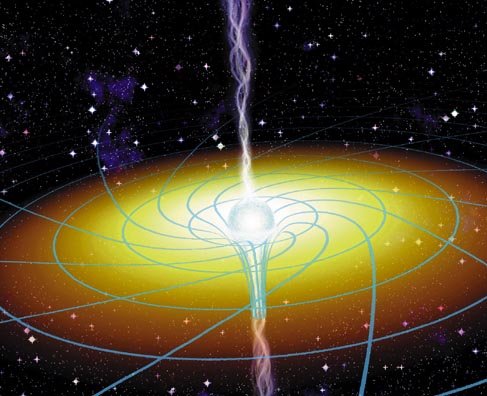
“Gravity can do more than floor you. According to recent measurements of a star system thought to contain a black hole, it can spin you too. This effect, called frame-dragging, is most prominent near massive, fast spinning objects. Now, a team led by W. Cui (MIT) has used the orbiting Rossi X-ray Timing Explorer to search for it near a system thought to contain a black hole. Cui's team claim that matter in this system gets caught up and spun around the black hole at just the rate expected from frame-dragging. Such discoveries help scientists better understand gravity itself."
Copyright: J. Bergeron
#873 Aristarchus' Unbelievable Discoveries November 08, 1997
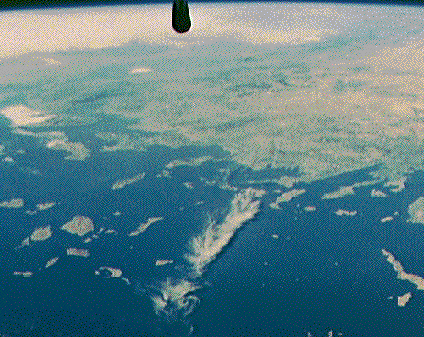
“Here lived one of the greatest thinkers in human history. Aristarchus lived on the Greek island of Samos, a small island in the center of the above picture that can be identified with a good map. Aristarchus, who lived from 310 BC to 230 BC, postulated that the planets orbited the Sun - not the Earth -- over a thousand years before Copernicus and Galileo made similar arguments. Aristarchus used clear logic to estimate the size of the Earth, the size and distance to our Moon, the size and distance to our Sun, then he even deduced that the points of light we see at night are not dots painted on some celestial sphere but stars like our Sun at enormous distances. Aristarchus' discoveries remained truly unbelievable to the people of his time but stand today as pillars of deductive reasoning."
Copyright: Public domain
#874 Surveyor Slides November 09, 1997
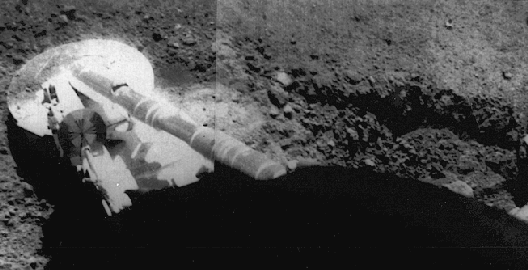
“"Safe!" In September 1967 (during regular season play), the Surveyor 5 lander actually slid several feet while making a successful soft landing on the Moon's Mare Tranquillitatis. Equipped with television cameras and soil sampling experiments, the US Surveyor spacecraft were intended to determine if the lunar surface at chosen locations was safe for manned landings. Surveyor 5 touched down on the inside edge of a small crater inclined at about 20 degrees. Its footpad slipped and dug the trench visible in the picture. Covered with lunar soil, the footpad is about 20 inches in diameter."
Copyright: Public domain
#875 Dark Volcano Active on Io November 10, 1997
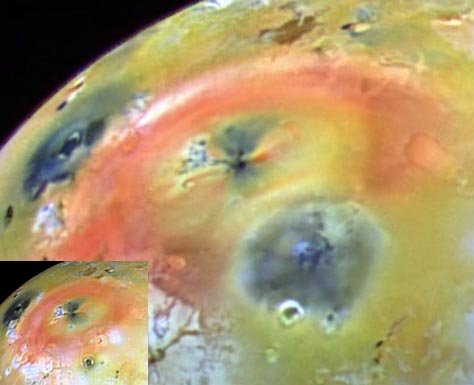
“The surface of Io is changing even as we watch. The inset frame of Jupiter's most active moon was taken by the robot spacecraft Galileo in April. Just last month the larger image was taken. The new large black spot reveals that a volcano named Pillan Patera has been erupting during the interim. A vast moonscape roughly the size of Arizona has just been covered by some dark material. What is this material? It's composition remains unknown although it is certainly different in color from the red material seen surrounding volcano Pele on the upper left."
Copyright: Public domain
#876 The Annotated Galactic Center November 11, 1997
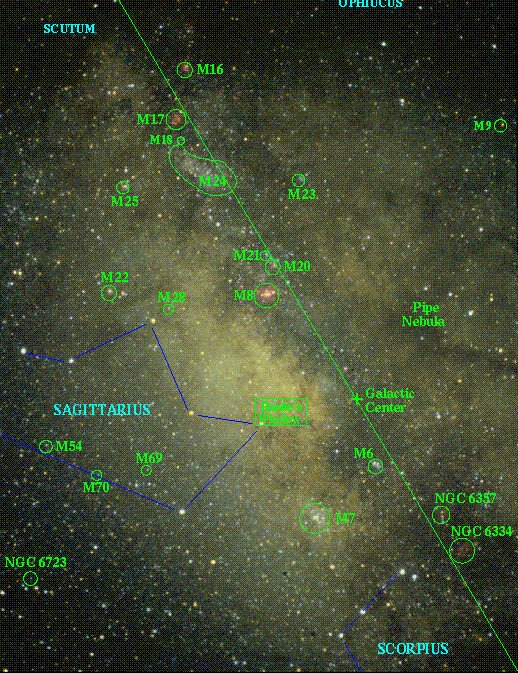
“The sky toward the center of our Galaxy is filled with a wide variety of celestial wonders. Most are visible with only binoculars. Constellations of nearby stars include Sagittarius, Libra, Scorpius, Scutum, and Ophiuchus. Nebulae include Messier Objects M8, M16, M17, M20 and the Pipe Nebula. Open clusters include M6, M7, M18, M21, M23, M24, M25. Globular clusters include M9, M22, M28, M54, M69, M70. And don't forget Baade's Window. Click on the photo to get the un-annotated version."
Copyright: Public domain
#877 El Niño Earth November 12, 1997
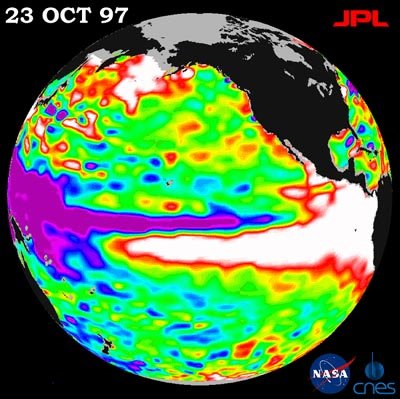
“Niño is a temporary global climate change resulting from unusually warm water in the central Pacific Ocean. El Niño can cause unusual or severe weather for some locations over the next few months. Warm water is shown in white in the above false-color picture taken by the orbiting TOPEX/Poseidon satellite in late October. The Pacific Ocean is color coded by sea surface height relative to normal ocean levels. The large white area represents a mass of warm water 30 times greater than all the Great Lakes, flowing toward the Americas. Although El Niños occur every decade or so, this year's is the first ever predicted. The cause and full effects of El Niños are still under study."
Copyright: Public domain
#878 Mars: A Sheer Close-up November 13, 1997
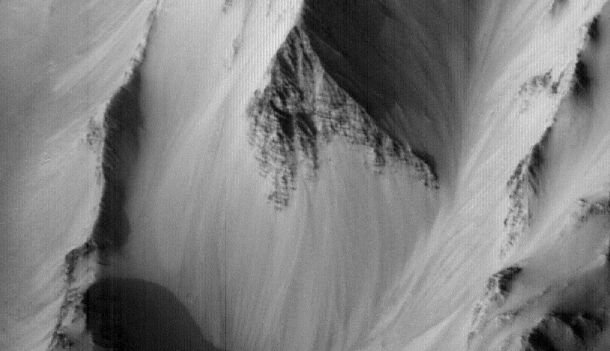
“As the Mars Global Surveyor spacecraft maneuvers toward its final mapping orbit, its cameras have been producing some sharp views of Mars. At a resolution of better than 30 feet per pixel, this image of a portion of the immense canyon, Valles Marineris, highlights the sheer mountain cliffs over 3200 feet tall near the canyon walls. The striking and extensive layering clearly apparent in the triangular mountain face was totally unanticipated. This exciting new result challenges common theories about the surface of Mars and argues that a complex early geological history is responsible for the current Martian landscape."
Copyright: Public domain
Upvote! Resteem! Comment! As you like it! Thank you for attention!